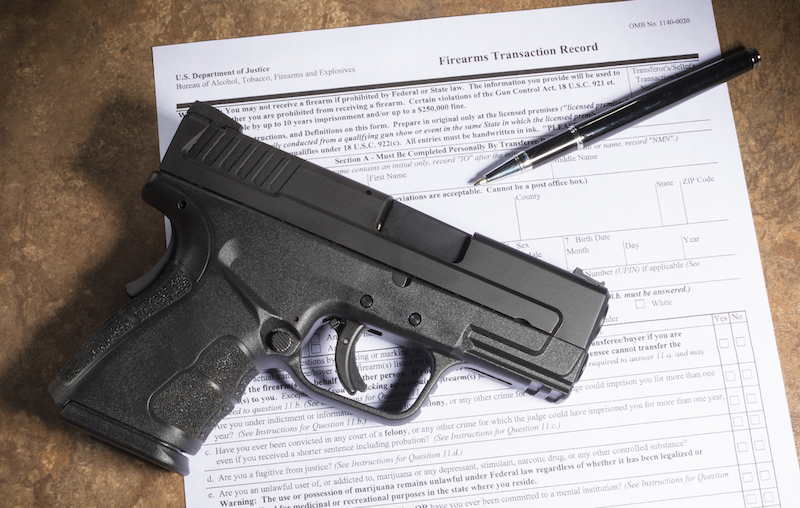
Firearms law and regulatory scholars must come together to tackle the gun control problem.
It would be an understatement to say that gun debate partisans have different views about the proper relationship between gun rights and regulation. From a scholarly perspective, those differences are typically refracted through the lenses of constitutional law, public health, political science, and—with increasing precision and clarity—history and sociology. When it comes to regulatory law, however, the interdisciplinary conversation has barely begun.
Firearms law scholars—ourselves included—have not taken full advantage of advances in regulation scholarship, focusing instead on constitutional law in general and the U.S. Constitution’s Second Amendment in particular. On the other side, regulatory scholars generally have not given the same attention to firearms as to other subjects like pharmaceuticals, financial services, and the environment.
There are many reasons why this might be so. The relative paucity of federal law is an obvious factor, as are legal obstacles to research imposed by laws such as the Dickey Amendment and the Tiahrt Amendment. In any event, our goal here is to suggest ways in which the two fields—regulation and firearms law—would benefit each other going forward.
One place to begin is with the concepts of risk and precaution—topics about which scholars of regulation have thought deeply, but which tend to lack conceptual clarity in the gun debate. Indeed, one way to understand the intensity and seeming intransigence of gun partisanship is to recognize that it results from two diametrically opposed invocations of the precautionary principle—the notion that regulation should minimize worst-case scenarios in situations of uncertain risk.
For some proponents of gun regulation, the worst-case scenario resembles the status quo: a world in which guns kill or wound about 100,000 Americans every year, mass murders with guns are a regular occurrence, and firearm-related suicide occurs at epidemic levels. For some proponents of gun rights, the worst-case scenario is a tyrannical government against which a disarmed populace is helpless.
The former wants regulation to reduce the risk of firearm-related death to near zero; the latter wants deregulation to reduce the risk of universal disarmament to near zero. Each side sees itself as protecting an essential value, and the other as recklessly threatening it. They differ in their conceptions of the worst case, to be sure, but they unite in arguing for strong versions of the precautionary principle—albeit one that favors regulation and one that opposes it.
But, as scholars of regulation have long recognized, risk and precaution must be managed.
Any regulatory regime will involve tradeoffs, generating what our colleague Jonathan Wiener and others call “risk versus risk” scenarios. This is true of firearms regulation. As we have argued elsewhere, admittedly through the lens of constitutional law, the gun debate raises scenarios where the right to keep and bear arms may be in tension with other fundamental rights and interests, including free speech, control of property, and personal safety—“rights versus rights” scenarios. As Justice John Paul Stevens put it, “Your interest in keeping and bearing a certain firearm may diminish my interest in being and feeling safe from armed violence.”
This kind of argument might appear hollow—even deluded—to someone whose primary concern is protecting private arms to ward off a potentially tyrannical federal government. Many gun rights advocates invoke Justice Joseph Story’s claim that the Second Amendment constitutes “the palladium of the liberties of a republic” because “it offers a strong moral check against the usurpation and arbitrary power of rulers” and that, even if the Amendment does not check the rulers “in the first instance,” it will “enable the people to resist and triumph over them.”
And yet, after the U.S. Supreme Court’s decision in District of Columbia v. Heller, courts have resisted the kind of absolutism that this stance might imply.
The prevailing doctrine in the federal courts allows for consideration of public safety and other values. So long as a government regulation recognizes that the Second Amendment requires some level of risk to health and safety from the private possession of firearms, then courts will not strike down the regulation because of tail risks feared by gun owners.
By contrast, some state and federal legislative efforts have effectively embraced the precautionary principle with regard to gun rights. Advocates have cited the tail risk of gun confiscation as reason to enact legislation that forces private businesses to permit guns onto their property, that forbids doctors from asking patients about guns in the home, or that requires overwhelming evidence for any gun-related regulation.
Underlying many of these gun-protective arguments and initiatives is some version of the precautionary principle, which is a hard argument to respond to. Once one accepts the premise that despotism is the worst-case scenario, then the conclusion that gun regulation must be strictly limited or even forbidden seems to follow directly. A great deal of Second Amendment debate focuses on the premise, but some insights from regulatory theory can help gain purchase on whether the conclusion necessarily follows.
Consider another line from Justice Story, one that again discusses standing armies. Noting that such “armies may prove dangerous to the state” but also “that the want of them may prove dangerous to the state,” he concluded that the solution would be “to check the undue exercise of the power, not to withhold it.” After all, he said, “too much precaution often leads to as many difficulties.”
Adrian Vermeule notes that Justice Story “in effect argues for a position that considers all relevant risks of all relevant alternatives, including both action and inaction, and then adopts cost-justified precautions in light of those risks.” Vermeule argues that a pathological perspective with respect to constitutional law—a narrow focus on worst-case scenarios, often corresponding to maximal rather than ideal rights enforcement—can generate excessive risks along other margins, or actually aggravate the risks the rules are designed to avoid. Vermeule observes that the “optimal level of the target risk is not zero” because “some degree of expected harm from the target risk is necessary to obtain other goods.”
For example, gun rights absolutists motivated by an anti-tyranny view of the Second Amendment might forget that the risk of bad faith government regulation cannot be reduced to zero, and that such risk may be necessary to obtain other goods like public safety and public order, or to protect other values like free speech and peaceable assembly. Similarly, those who demand constitutional protection for private possession of military-grade weapons ignore the potential risk of reactionary “militarization” of government and law enforcement that the right to keep and bear arms is supposed to prevent.
One does not have to go full Leviathan, of course, or believe government must monopolize all effective means of violence. The right to keep and bear arms is, after all, a fundamental constitutional right that could prevent what might otherwise be an optimal regulatory scheme from a public health perspective. But conceding such a right does not lessen the point that maximal rights enforcement as a precaution against tail risks can frustrate optimal risk management.
Another way in which insights from regulatory scholarship could enrich the debate over firearms is in the richness of the growing literature on cost-benefit analysis, well-being, and related issues.
The gun debate tends to focus on a limited set of values—public safety and individual liberty—rather than the full panoply of metrics that the keeping and bearing of arms affect. Those include fear, happiness, and democratic participation, as well as safety and liberty. Although firearms law scholars have begun to reckon with those factors, existing gun rights litigation and legislative debates—such as those involving guns in schools and college campuses, or at political protests—generally deemphasize them.
Our goal here is not to advocate particular policies regarding any of these issues, but simply to suggest new ways to analyze them using familiar tools of regulatory law. Few regulatory issues are subject to more political rhetoric or active litigation than guns. As firearms law begins to solidify into something like a scholarly field, it will increasingly come into contact with adjacent fields like regulation, sparking a conversation that could benefit both.
This essay is part of a nine-part series, entitled Bringing Expertise to the Gun Debate.





